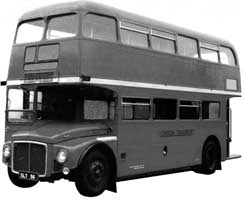| |
Love letter to the bus for the working man
The fate of the iconic Routemaster inspired Travis Elborough to write a loving study of the four-wheeled wonders, says Dan Carrier
The Bus We Loved by Travis Elborough Granta, £12 order this book
DOUGLAS Scott was responsible for perhaps the most recognisable symbol of 20th-century British industrial design; the Routemaster bus.
It has become an icon. Scott, who also designed an Aga cooker and the ‘K8’ red phone box, was given his wages in a quintessentially 1950s way.
“I shall never forget how I was paid for the Routemaster job,” he told Design Magazine in 1983"
“The money came from petty cash.”
The man behind the vessel that has transported millions of Londoners millions of miles was asked to sign a chitty while notes were taken from a tin box and counted out by one of London Transport’s clerks.
Such vignettes litter The Bus We Loved, a thorough history of Scott’s design by self-confessed bus lover Travis Elborough.
Mr Elborough, who lives in Tufnell Park, has written a tribute to an integral part of London life. This year they will finally be scrapped, sold off to enthusiasts and replaced by Continental-style bendy-buses. The London bus is no more – which makes Mr Elborough’s book not just interesting but timely.
The final Routemaster to be built trundled off the production line in 1968: bus bosses said they would all be off the road by 1975. But it has taken another 30 years and a change in policy rather than for any mechanical reason for the Routemaster to be put out to pasture.
The bus is going because it has no disabled access and London Transport is scared of litigation from passengers who have injured themselves hopping on and off.
They have lasted so well partly, explains Mr Elborough, because of their design.
Apart from being robust, they were easy to fix. Parts were interchangeable: every two years a Routemaster was taken off the road and given a thorough overhaul. This prolonged their shelf life.
But it is not just their hardiness that has meant they have lasted: it is their instantly recognisable look.
London Transport has always been associated with iconic design. It came from Frank Pick – as Mr Elborough says: “London owes Pick a great deal. He bequeathed to London an entire civic identity belief that it could be proud of.”
Pick had been appointed head of the commercial department of the Underground in 1912 and for the rest of his life – he died in 1942 as the managing director – he dedicated his time to improving the transport system. He was behind Harry Beck’s Tube map and many of the Art Deco Tube stations of the 1920s and 30s.
As architectural expert Nikholas Pevsner put it: “Pick is the Lorenzo the Magnificent (the 15thcentury Florentine patron of the arts) of our age and he is the greatest patron of the arts whom this century has so far produced in England.”
Pick was a socialist and his vision was to create a transport network that would be emancipate working people. He wanted them to be able to travel cheaply to work in style.
And it was this concept that inspired Donald Scott.
As Mr Elborough points out, the design brief for the Routemaster was to make it as comfortable as driving a car.
But their design was not just about doing things in style – it was also a piece of brilliant engineering.
Mr Elborough says: “The Routemaster is the last of its kind. The last bus to be built for London, by Londoners in London.”
The book makes a potentially benign subject racy: he litters his work with cultural references and strange tales. The biography of a bus may not seem like topic for a book that is hard to put down, but it is much more than that. It is about style, design, cultural influences and Mr Elborough uses the bus to carry some interesting insights on 20th-century social history.
And he came up with the idea when he took the bus each week to the British Library.
“I was doing lots of research at the British Library and I would catch the Number 10 or 390 from Tufnell Park.
“I then read that they were being phased out so I started taking photographs of them.”
publisher Ian Jack at a party. They were discussing how they both had got to the bash – and during the conversation, Mr Elborough realised he had not just the germ of an idea for a good book, but the ideal person to pitch it to.
“I thought it would read as the history and cultural impact of the Routemaster,” he said.
“The Illustrated London News noted that it was ‘built on revolutionary lines to carry eight more people than the present London bus but which weighs less’.”
And even the name was seen to be trendy: “At one point they were going to call it the Roadmaster, but that sounded too bullying,” says Mr Elborough.
“‘Masters’ were in vogue. A Rowe Hillmaster truck was unveiled, while cinema-goers that year watched an apartment bound Jimmy Stewart trim his stubble with a Shavemaster in Rear Window.”
And that is what makes the book. It was good when it was first built, and still is today. It is about something that is 50-years-old but has managed never to go out of fashion. Its passing will be mourned by all Londoners.
|
| |
|


